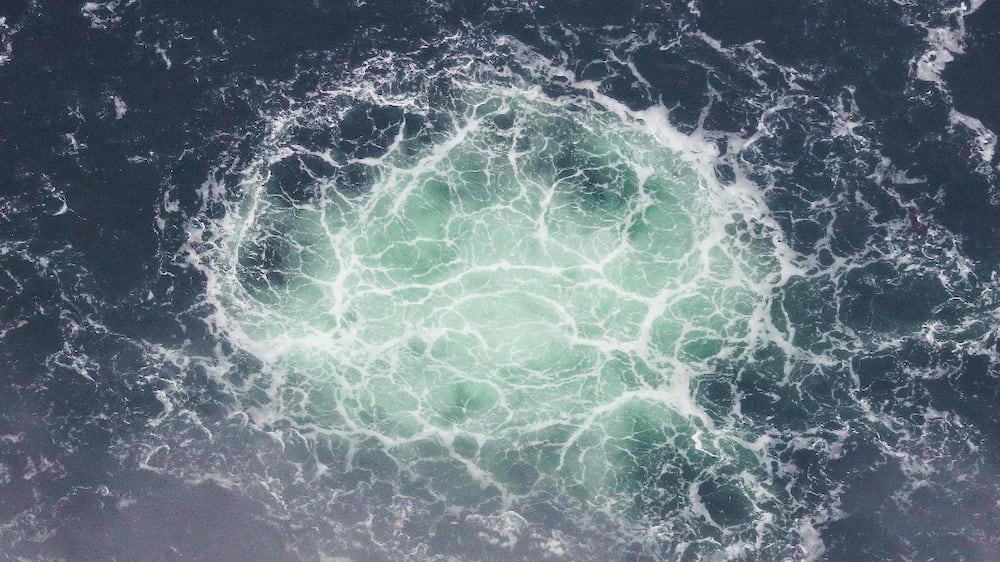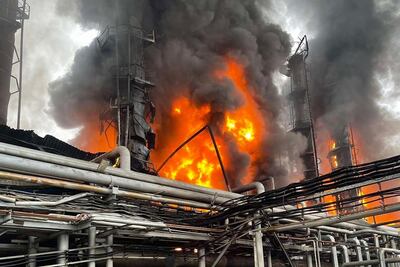Explosions last week caused four huge leaks on the Nord Stream gas pipelines under the Baltic Sea from Russia to Germany, and have likely put the lines out of operation permanently. The long history of such happenings make the physical security of energy supply a top priority — and not just in Europe.
Nord Stream I had been down following alleged maintenance problems in August. The controversial Nord Stream II was robustly opposed by the US and eastern European nations led by Warsaw, but strongly supported by former German chancellor Gerhard Schröder and his successor Angela Merkel. It was completed in September last year but never entered service.
Conspiracy theories swirl that the explosions were orchestrated by the US, Poland, Ukraine or another anti-Russian force. It is admittedly odd that Russia would eliminate its remaining energy leverage and forestall any waning commitment in European capitals through a cold winter.
Fourth leak reported on Nord Stream pipelines

But it’s even less credible that a Nato state or ally would attack its partners and take the risk of being unmasked, when there is no sign of wavering in Berlin nor any realistic path to a “gas for appeasement” deal.
Gas export monopoly Gazprom had already ceased supplies to Europe through the Yamal pipeline through Belarus and Poland. That leaves supply from Ukraine — oddly, still operating, though at greatly reduced levels — through pipelines to Turkey, and liquefied natural gas by tanker, as the only ways Russian gas still enters the continent.
Ukraine’s Naftogaz has launched arbitration against Gazprom for failing to pay transit fees. Gazprom has said that pursuing the case could lead Russia to impose sanctions, preventing further gas supplies through Ukraine.
This is far from the first time that the physical security of energy assets in and around Russia has been damaged or manipulated.
In 2009, a pipeline rupture halted gas exports from Turkmenistan to Russia, convenient for Gazprom which was struggling with a slump in demand due to the global financial crisis.
The Turkmen Foreign Ministry blamed the Russian company for reducing its offtake without sufficient warning, causing a build-up of pressure.
In June last year, a major fire hit the Urengoy gasfield, one of Russia’s largest. Although this was surely a genuine accident, it served as an excuse for Gazprom to reduce supplies to Europe, helping to draw down stored gas before February’s invasion of Ukraine. Only a mild winter saved Europe from a more serious gas shock then.

And in April, a storm allegedly damaged loading terminals for Kazakh oil at the Russian port of Novorossiysk on the Black Sea, cutting shipments at a time that sanctions and buyer aversion were hampering Russia’s own oil sales.
Conversely, the more conspiratorially-minded will point to the supposed sabotage of a gas pipeline in Siberia in 1982.
The US under president Ronald Reagan opposed Soviet gas exports to western Europe, and a former aide to Reagan alleged the Central Intelligence Agency (CIA) provided faulty software that over-pressured the line and caused a huge explosion. However, the reality of the plot and even the explosion have been widely dismissed.
So where or what else could be under threat? Russia has followed up the closure of Nord Stream by suspending gas supplies to Italy, alleging a transport problem through Austria, and reducing shipments to Moldova by 30 per cent.
With the near-total interruption of Russian supplies, Norway has become the continent’s leading supplier. The just-opened Baltic Pipe to Poland runs close to the site of the Nord Stream blasts. Both Norway and Denmark have warned of numerous sightings of unidentified drones flying near their offshore oil and gas platforms recently.
Azerbaijan has also gained importance as a supplier to Europe. The Baku-Ceyhan oil pipeline and Trans-Anatolian gas pipeline run from the Caspian state through Georgia and Turkey.
The Russian forces in occupied South Ossetia are just a few kilometres from Georgia’s main east-west motorway.
Russia also has a naval base at Tartus in Syria, although threats to the gas connections between North Africa, Spain and Italy seem more far-fetched.
And it’s not just pipelines. Ukraine suffered a major electricity cut because of a cyber attack in December 2015 and narrowly thwarted another in the early stages of the current war. Its Russian-occupied Zaporizhzhia nuclear power plant has been targeted by shelling and shut-offs of emergency power.
Subsea electricity cables are increasingly important, such as links from Norway and continental Europe to the UK and Ireland, and from the North Sea’s growing cluster of offshore wind farms.
Beyond energy, former Nato supreme commander Admiral John Stavridis has warned of threats to submarine internet cables. In 2008, Middle East internet services were interrupted by damage to cables in the Mediterranean, probably accidentally caused by ship anchors.
And other states might attack energy infrastructure, for their own reasons, but in ways helpful to Moscow. A spate of drone, mine and missile attacks and tanker seizures against Saudi Arabia and shipping in the Arabian Gulf have been blamed on Iran or its allies in Yemen and Iraq.
So the next few months are perilous ones for energy infrastructure. Europe needs to be prepared.
Robin M Mills is chief executive of Qamar Energy and author of The Myth of the Oil Crisis






